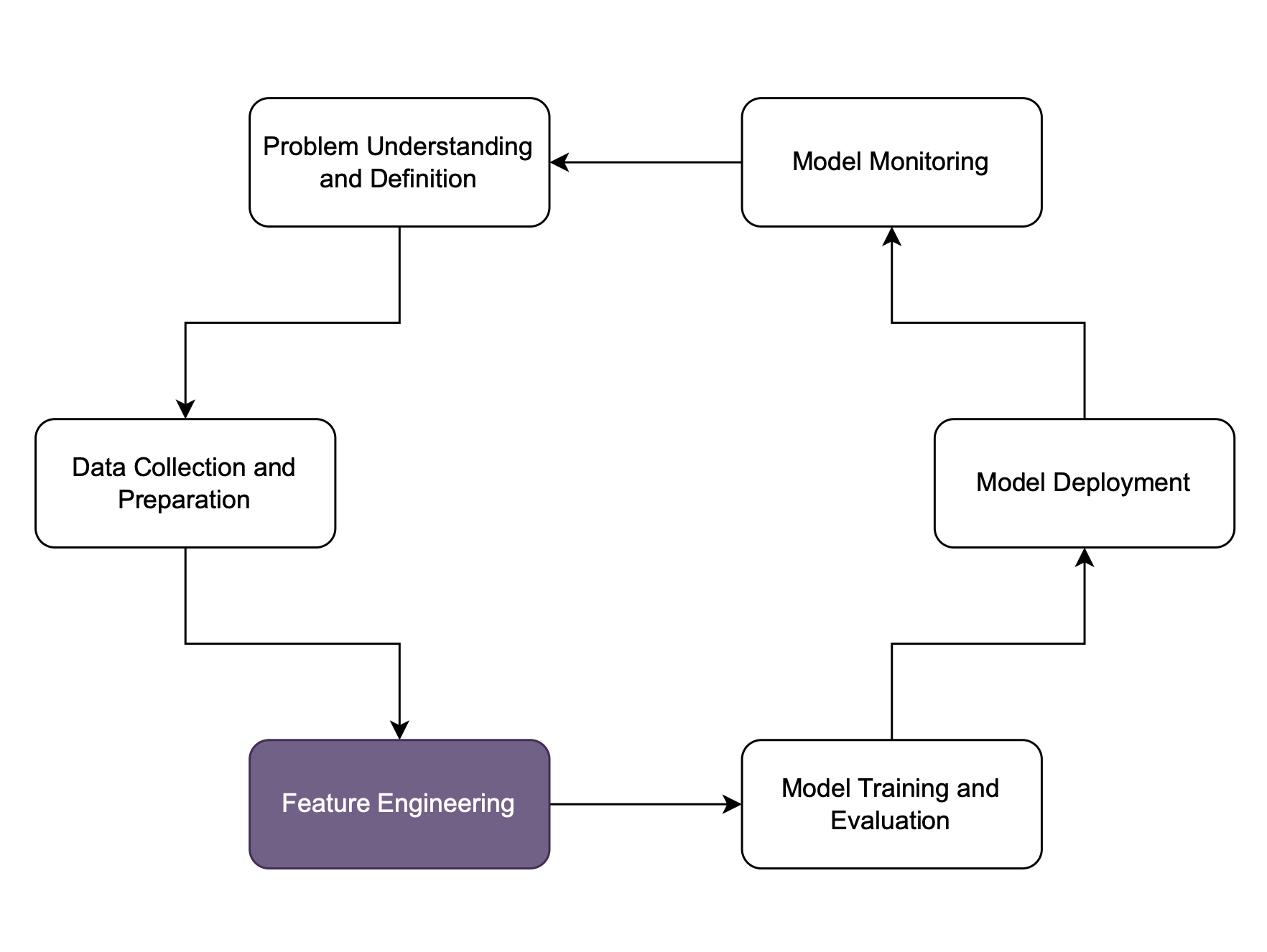Feature engineering and selection
End-to-End Machine Learning

Joshua Stapleton
Machine Learning Engineer
Feature engineering
Creating features
- Simplifies problem
- Improves model efficiency
Techniques
- Modify pre-existing features
- Design new features
Benefits
- Easier deployment, maintenance, training
- Interpretability gain

Normalization
- Scales numeric features to [0, 1]
- Helpful when features have different scales/ranges.
from sklearn.model_selection import train_test_split
from sklearn.preprocessing import Normalizer
# Split the data
X_train, X_test = train_test_split(df, test_size=0.2, random_state=42)
# Createnormalizer object, fit on training data, normalize, and transform test set
norm = Normalizer()
X_train_norm = norm.fit_transform(X_train)
X_test_norm = norm.transform(X_test)
Standardization
- Scales data to have mean = 0, variance = 1
- Beneficial for algorithms that assume similar mean and variance
from sklearn.preprocessing import StandardScaler
# Split the data
X_train, X_test = train_test_split(df, test_size=0.2, random_state=42)
# Create a scaler object and fit training data to standardize it
sc = StandardScaler()
X_train_stzd = sc.fit_transform(X_train)
# Only standardize the test data
X_test_stzd = sc.transform(X_test)
What constitutes a good feature?
- Use relevant features
- Weather on the day of patient appointment should have no bearing on diagnosis

- Use dissimilar (orthogonal) features
- Two features of age in months and age in years would not be helpful

sklearn.feature_selection
from sklearn.ensemble import RandomForestClassifier from sklearn.feature_selection import SelectFromModel from sklearn.model_selection import train_test_split# Splitting data into train and test subsets first to avoid data leakage X_train, X_test, y_train, y_test = train_test_split( heart_disease_df_X, heart_disease_df_y, test_size=0.2, random_state=42)
sklearn.feature_selection (cont.)
# Define and fit the random forest model rf = RandomForestClassifier(n_jobs=-1, class_weight='balanced', max_depth=5) rf.fit(X_train, y_train)# Define and run feature selection model = SelectFromModel(rf, prefit=True) features_bool = model.get_support() features = heart_disease_df.columns[features_bool]
Let's practice!
End-to-End Machine Learning

